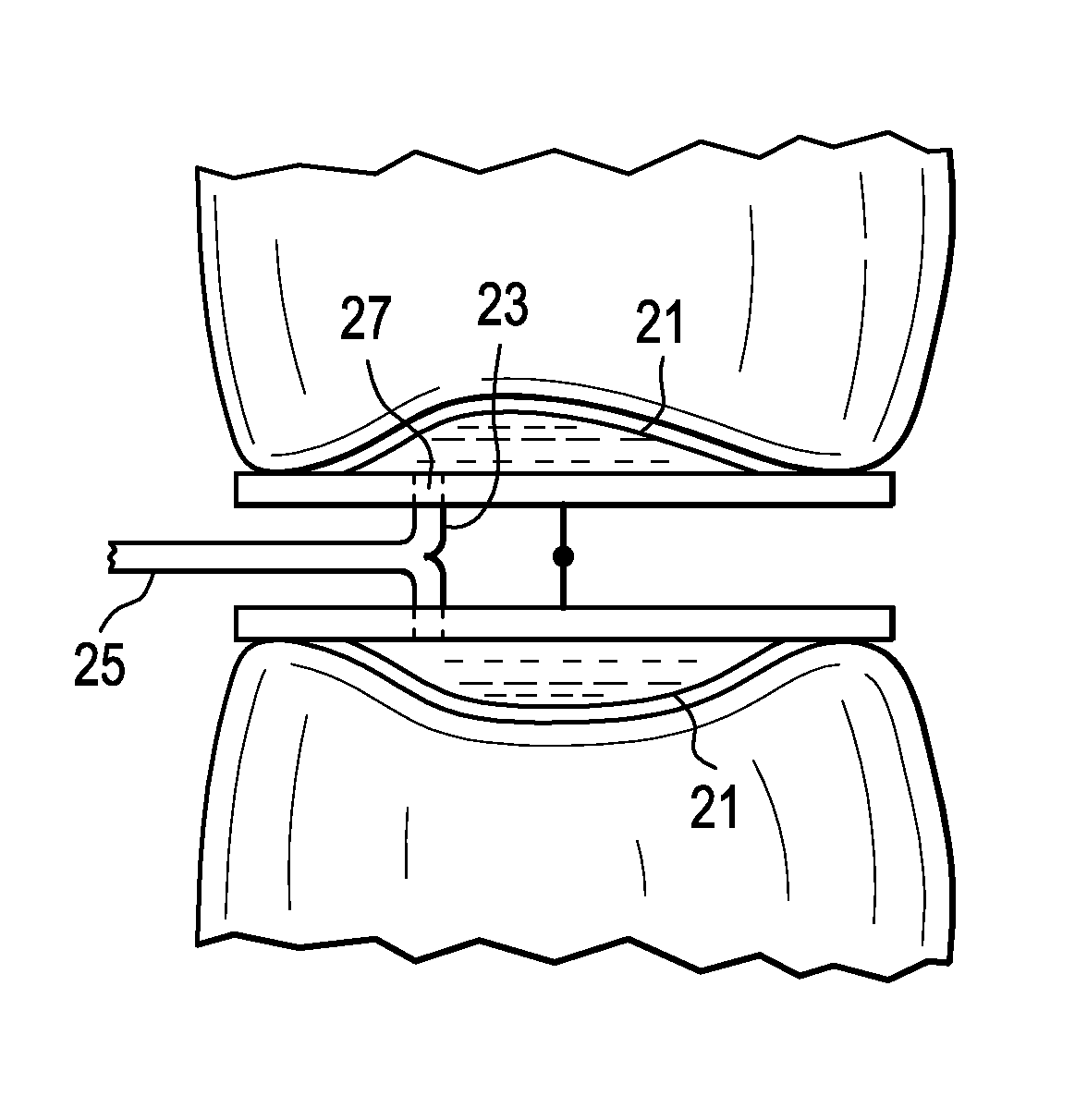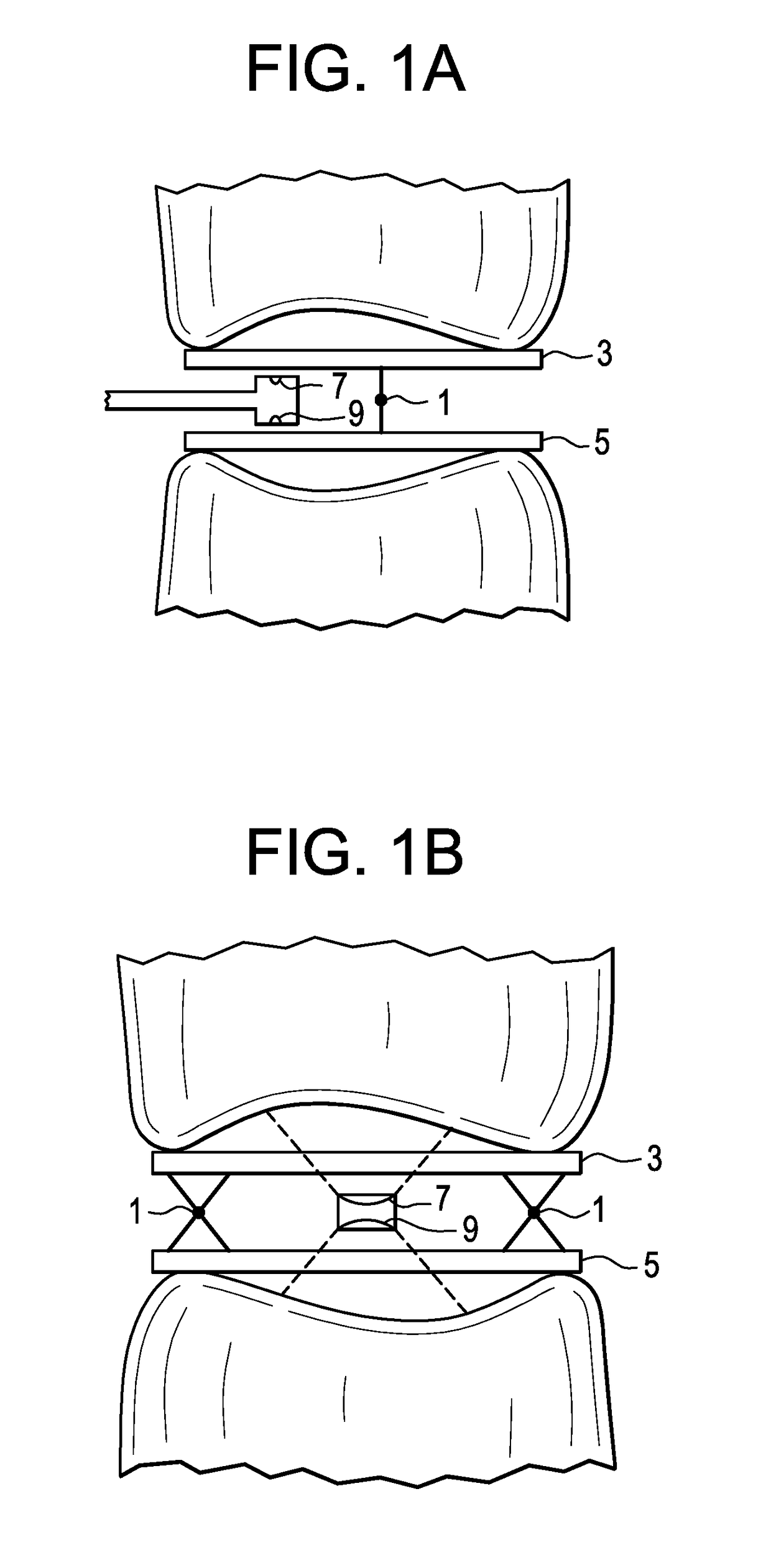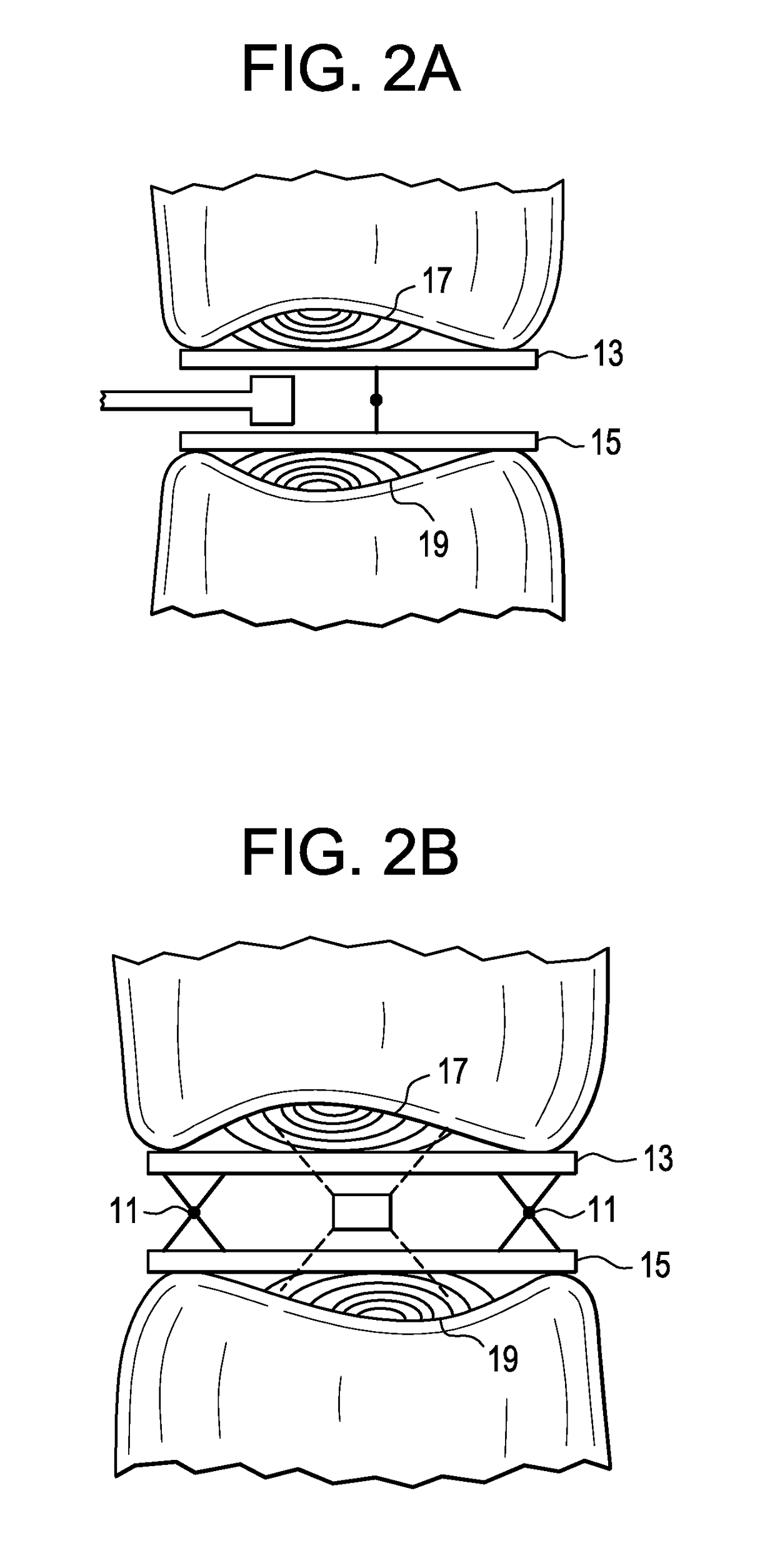Patient-specific spinal fusion cage and methods of making same
a patient-specific and cage-making technology, applied in the field of patient-specific spinal fusion cages and methods of making same, can solve the problems of insufficient contact area, cage expulsion from disc space, cage to settle or subside into the vertebral body, etc., and achieve the effect of reducing subsidence and expulsion, and maximizing contact area
- Summary
- Abstract
- Description
- Claims
- Application Information
AI Technical Summary
Benefits of technology
Problems solved by technology
Method used
Image
Examples
Embodiment Construction
[0036]In general, the trial of the present invention comprises the aforesaid distal portion, a proximal end portion comprising a handle, and an elongated intermediate portion. Preferably, the elongated intermediate portion comprises a rod. Also preferably, the upper and lower surfaces are substantially planar.
[0037]In one embodiment of the invention, the imaging feature comprises an endoscope having a light emitter, such as a fiber optic. In this embodiment, the light emitter emits light waves into the cavity between the trial and the vertebral endplate to create return signals. A monitoring system including a camera creates a 3D image of the cavity from the return signals. A screen may also provide a visual identification of the endplate contour.
[0038]In one embodiment, the fiber optic emits light waves from a tip of a fiber optic into the cavity between the vertebral endplate and the trial. Light waves are emitted at frequencies sufficient to image endplate contours. In this embod...
PUM
| Property | Measurement | Unit |
|---|---|---|
| height | aaaaa | aaaaa |
| light absorption imaging | aaaaa | aaaaa |
| area | aaaaa | aaaaa |
Abstract
Description
Claims
Application Information
 Login to View More
Login to View More - R&D
- Intellectual Property
- Life Sciences
- Materials
- Tech Scout
- Unparalleled Data Quality
- Higher Quality Content
- 60% Fewer Hallucinations
Browse by: Latest US Patents, China's latest patents, Technical Efficacy Thesaurus, Application Domain, Technology Topic, Popular Technical Reports.
© 2025 PatSnap. All rights reserved.Legal|Privacy policy|Modern Slavery Act Transparency Statement|Sitemap|About US| Contact US: help@patsnap.com



